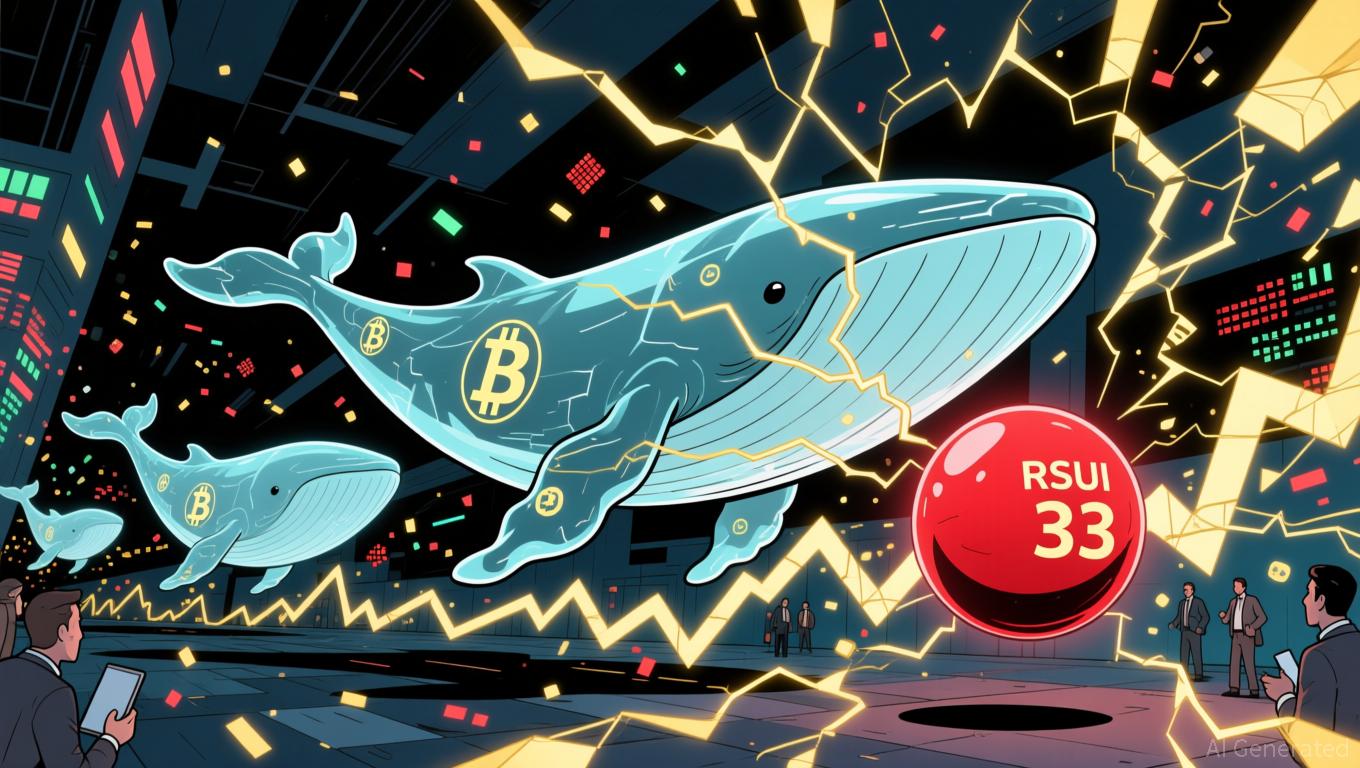The Rapid Rise of ZK (Zero-Knowledge) Assets and Protocols: How Network Enhancements and Institutional Embrace Impact Investments
- ZK protocols saw 2025 seismic growth via network upgrades and institutional adoption, reshaping investment theses for scalable, private blockchain infrastructure. - ZKsync's Atlas Upgrade achieved 43,000 TPS with $0.0001/tx costs, while Polygon and StarkNet secured $1B+ in adoption through EVM compatibility and 90% gas fee reductions. - Deutsche Bank , Walmart , and HSBC adopted ZKP for cross-chain settlements, supply chain transparency, and compliance, accelerating enterprise-grade use cases. - ZKP mark
Network Upgrades: Addressing the Scalability Challenge
The Atlas Upgrade introduced by ZKsync in 2025 demonstrates how ZK protocols are tackling the longstanding blockchain scalability dilemma. With the launch of the Atlas Sequencer and Airbender Prover,
Alongside ZKsync’s achievements, Polygon zkEVM has committed $1 billion to advancing ZKP adoption, using EVM compatibility to facilitate the smooth transition of
Institutional Adoption: Turning Compliance into Opportunity
More institutions are turning to ZK protocols as they seek solutions that offer privacy, scalability, and regulatory alignment. Deutsche Bank has adopted ZKsync for cross-chain settlements, benefiting from its EVM compatibility and lower operational expenses
Protocols focused on privacy, such as Aztec Network and Mina Protocol, are also gaining momentum. Aztec allows institutions to conduct confidential DeFi transactions, and Mina’s compact 22KB blockchain makes it accessible for devices with limited resources
Market Trends and Investment Outlook
The ZKP industry, valued at $1.28 billion in 2024, is forecasted to grow to $7.59 billion by 2033, representing a 22.1% annual growth rate
For those investing in the space, the most promising protocols are those that blend technical excellence with strong enterprise uptake. The Atlas Upgrade by ZKsync, for example, not only enhances scalability but also meets institutional needs for interoperability and cost savings. Likewise, initiatives like Quartz KYC, which uses ZKP to cut compliance times from 10 days to just 3 hours, illustrate the technology’s importance in regulated sectors
Risks and Key Considerations
Despite the positive outlook, investors should proceed carefully. Uncertainty in regulations, especially regarding tokenized assets and cross-chain transactions, could lead to market fluctuations. Furthermore, the fast pace of technological change means that protocols lacking strong technical foundations may lose relevance. Spreading investments across various ZK ecosystems—including EVM-compatible platforms (like ZKsync and Polygon) and privacy-centric networks (such as Aztec and Mina)—can help manage these risks.
Conclusion
The rapid growth in ZK protocols and assets is a response to genuine demand for infrastructure that is scalable, private, and compliant—not just market speculation. As more organizations and businesses implement ZKP-based solutions, investment opportunities will increasingly favor protocols that offer both technical breakthroughs and real-world utility. For investors, the coming 12 to 24 months are a crucial period to take advantage of this shift, provided they focus on projects with demonstrated institutional support and clear upgrade strategies.
Disclaimer: The content of this article solely reflects the author's opinion and does not represent the platform in any capacity. This article is not intended to serve as a reference for making investment decisions.
You may also like
MAHA's Struggle with Identity: Corporate Connections Versus Community Origins
- Robert F. Kennedy Jr.'s MAHA movement faces internal fractures as corporate partnerships and policy shifts alienate grassroots supporters. - Critics accuse the administration of abandoning anti-vaccine roots through $500M funding cuts and collaborations with biotech firms like Eli Lilly . - Former allies condemn MAHA's "identity crisis," while 67% public support persists despite warnings about coalition dilution from experts. - Kennedy defends pragmatic alliances as necessary for governance, but faces pr

Redefining Confidence: How DeFi's Openness is Transforming Crypto Lending
- DeFi platforms now dominate 66.9% of crypto lending, surpassing CeFi with $41B in Q3 2025 growth driven by yield farming and innovations like Pendle tokens. - The shift reflects demand for transparency and composability, with Aave's Plasma blockchain attracting $3B in borrows within weeks and Mutuum Finance's $20M presale highlighting DeFi's permissionless liquidity. - CeFi lenders like Tether hold 59.91% of tracked loans but face 33% smaller market size than 2022 peaks due to stricter collateral rules a

Bitcoin News Update: Crypto at a Turning Point: Major Investor Acquires $2.3B While $3.8B Leaves ETFs
- Bitcoin's RSI hit a 2022 low (33), signaling extreme oversold conditions as institutional buyers and crypto whales re-enter the market. - Ark Invest led $79. 3M in crypto stock purchases (Bullish, Circle , Bitmine) while U.S. spot Bitcoin ETFs saw $3.79B in November outflows. - Whale accumulation added $2.3B in BTC (26,300 coins) but contrasted with BlackRock's $523M IBIT redemption and Owen Gunden's $1.3B BTC liquidation. - Market analysts highlight conflicting signals: Ark's "buy the dip" strategy vers

Van Eck CEO Managing Billions of Dollars Says, “If This Happens, We’ll Walk Away from Bitcoin,” Names One Altcoin